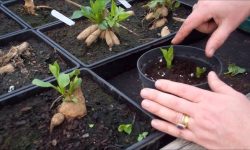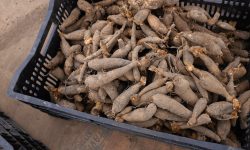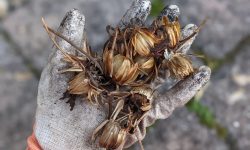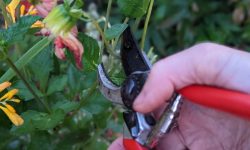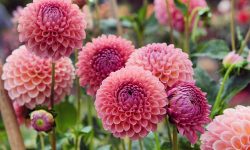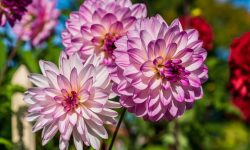Gerbera daisies, with their bold colors and cheerful faces, are a favorite in gardens and bouquets around the world. But many gardeners wonder—are these stunning blooms true perennials, or do they fade away after one season?
Understanding the life cycle of gerbera daisies is key to keeping them thriving year after year. In this guide, you’ll discover whether gerberas can return each season, how to care for them in your climate, and expert tips to enjoy nonstop color from spring through fall.
Understanding Gerbera Daisies and Their Growth Habits
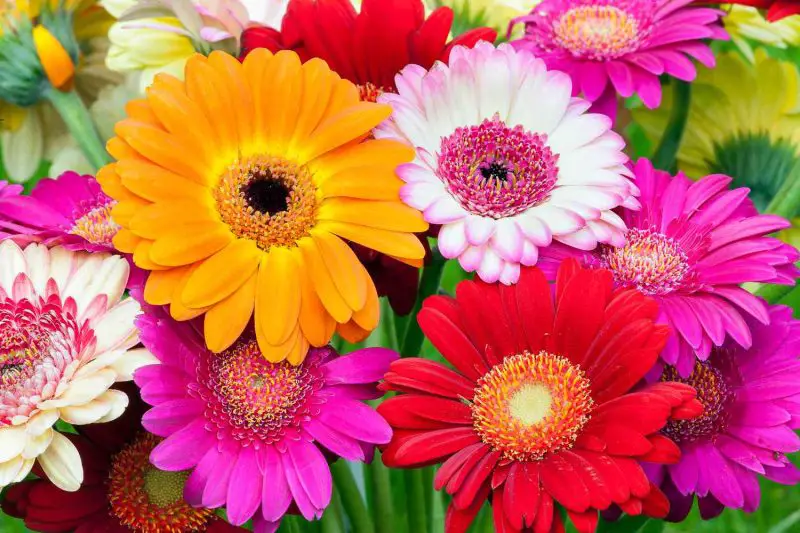
Gerbera daisies, scientifically known as Gerbera jamesonii, are cherished for their bright, cheerful blooms and are often seen in gardens, containers, and floral arrangements. These vibrant flowers come in a wide range of colors, from vivid reds and oranges to soft pinks and whites. But when it comes to classifying them as perennials or annuals, the answer depends largely on climate and care.
In warmer climates, particularly USDA zones 8 through 11, gerbera daisies can thrive as perennials, coming back year after year with the right maintenance. However, in cooler zones where frost and freezing temperatures are common, they are typically grown as annuals or treated as tender perennials that need to be overwintered indoors.
Understanding their natural habitat is key to growing them successfully. Gerberas are native to South Africa, where they enjoy mild winters and moderate summers. This origin explains their preference for warmth, good drainage, and abundant sunlight.
Climate Zones and Their Impact on Growth
Climate plays a critical role in determining whether your gerbera daisies will thrive as perennials or behave like annuals. In zones 8 to 11, where winter temperatures rarely dip below freezing, these plants can survive year-round with minimal protection. They appreciate warm days, cool nights, and excellent airflow.
However, in zones 7 and below, frost and frozen soil can damage their root systems, turning them into short-lived annuals unless brought indoors or heavily mulched. Humidity levels also matter—excessively humid conditions can promote fungal problems, while overly dry air may lead to leaf browning and reduced flower production.
Understanding your zone’s average temperatures, frost dates, and seasonal precipitation helps you plan ahead—whether it’s choosing a hardy cultivar or adjusting care routines like mulching and watering frequency.
Perennial vs. Annual Behavior Based on Region
In warm southern climates such as Florida, Texas, or parts of California, gerbera daisies often behave as true perennials. They may continue to grow and bloom through mild winters, especially with light pruning and feeding. Even in slightly cooler regions like zone 7, they can be perennial if planted in well-drained soil and protected with mulch or row covers.
In northern states or mountainous areas with harsh winters, the same plants will likely not survive in-ground without intervention. Gardeners in those areas may either grow gerbera daisies as annual bedding plants or dig them up in fall to overwinter indoors. The regional behavior of the plant directly influences how you prune, feed, and propagate your daisies throughout the year.
How to Identify Perennial Gerbera Cultivars
Not all gerbera daisies are created equal—some cultivars are more cold-tolerant and better suited for perennial growth. Hardy varieties like the Garvinea® series are specifically bred for outdoor durability. These cultivars feature thicker stems, improved disease resistance, and a longer blooming season.
You can also identify potential perennial candidates by their robust root systems and dense foliage. When shopping for gerberas, check plant labels or consult local nurseries for recommendations tailored to your growing zone. Opt for cultivars described as “hardy,” “cold-tolerant,” or “suitable for overwintering outdoors.”
Knowing the cultivar type not only helps you prepare your care routine but also determines your chances of enjoying long-term blooms without needing to replant every season.
How to Care for Gerbera Daisies Year-Round
Caring for Gerbera daisies throughout the year involves adapting your routine to seasonal changes while keeping their basic needs in check. With the right care, these vibrant blooms can thrive indoors or out, regardless of the time of year.
Spring: Stimulating New Growth
As temperatures rise and daylight increases, Gerbera daisies emerge from winter dormancy. This is the ideal time to refresh the soil, prune back any dead foliage, and apply a balanced, slow-release fertilizer. Move outdoor plants to a sunnier spot if they’ve been sheltered. For indoor plants, ensure they get bright indirect light for at least six hours daily.
Summer: Peak Blooming and Maintenance
Summer is when Gerbera daisies are most productive. Water regularly, ensuring the soil remains moist but not soggy. Deadhead spent flowers to encourage continuous blooming and watch for pests such as spider mites or aphids. If temperatures soar above 85°F (29°C), provide partial afternoon shade to prevent stress.
Fall: Preparing for Dormancy
As daylight shortens and temperatures cool, growth slows. Reduce watering frequency slightly but don’t let the soil dry out completely. Cut back on fertilizer use to allow the plant to rest. If you live in a cold climate, consider bringing potted Gerberas indoors before the first frost.
Winter: Rest and Protection
During winter, Gerbera daisies enter a semi-dormant state. Keep indoor plants in a bright location, preferably with supplemental light if natural light is limited. Water sparingly—only when the top inch of soil is dry. Avoid fertilizing during this time to let the plant conserve energy.
By adjusting your care to suit each season, you’ll support strong, healthy plants that reward you with vibrant blooms year after year.
How to Overwinter Gerbera Daisies Successfully
Overwintering Gerbera daisies is essential if you want to enjoy their bright blooms again the following spring, especially in colder climates. Since Gerberas are tender perennials in USDA zones 8–11, gardeners in cooler zones must take specific steps to protect their plants from frost and freezing temperatures.
Bringing Potted Gerberas Indoors
If your Gerbera daisies are in containers, overwintering is relatively easy. Before the first frost, inspect the plants for pests and diseases. Trim off any damaged or dying leaves to reduce stress. Then, move the pots to a bright indoor location such as a sunny windowsill or a heated sunroom. Aim for temperatures between 60°F and 70°F (15°C to 21°C). If natural light is limited, supplement with grow lights to maintain healthy foliage.
During the winter months, water only when the top inch of soil feels dry to the touch. Avoid overwatering, as the plant’s growth slows and soggy soil can lead to root rot. Do not fertilize during this time, as the plant is in a resting phase and doesn’t need extra nutrients.
Protecting In-Ground Plants in Colder Climates
For Gerbera daisies planted directly in the garden in regions colder than zone 8, overwintering can be more challenging. In these cases, dig up the plant before the first hard frost and transplant it into a well-draining container. Use fresh potting mix and follow the same indoor care guidelines as potted plants.
If you prefer to leave the plants in the ground, add a thick layer of mulch—about 3 to 4 inches—around the crown to insulate the roots from freezing temperatures. This method may not guarantee survival through harsh winters but can help in areas with milder winters or occasional frosts.
Encouraging Healthy Spring Regrowth
As winter fades and warmer weather returns, gradually reintroduce your Gerbera daisies to the outdoors. Start by placing them outside for a few hours each day in a shaded spot to acclimate them to the new environment. After a week or two, transition them to full sun. Resume regular watering and feeding with a balanced fertilizer to encourage strong growth and a new flush of blooms.
Proper overwintering not only ensures your Gerbera daisies survive the cold but also sets them up for vibrant, early-season flowering the next year.
Common Problems and How to Solve Them
While Gerbera daisies are known for their vibrant charm and relatively easy care, they can still encounter a few challenges. Identifying and resolving these problems early can make the difference between a thriving plant and a struggling one. Here’s how to troubleshoot the most common issues affecting Gerbera daisies.
Yellowing Leaves
Yellow leaves on Gerbera daisies can signal several issues. Overwatering is the most frequent cause, as soggy roots reduce oxygen and encourage rot. Make sure the soil drains well and that the plant is not sitting in water. Another potential reason is nutrient deficiency, particularly nitrogen or iron. Applying a balanced fertilizer or iron supplement can help restore the plant’s color and vigor.
Lack of sunlight can also result in yellow leaves. Gerbera daisies need plenty of bright, direct sunlight to photosynthesize efficiently. Ensure they receive at least six hours of full sun daily, especially when grown outdoors.
Powdery Mildew and Fungal Diseases
Powdery mildew is a common fungal issue in Gerbera daisies, especially in humid conditions or when airflow is limited. You’ll recognize it by a white, powdery substance on the leaves. To treat it, prune affected foliage and use an organic fungicide if needed. Avoid overhead watering and provide proper spacing between plants to increase air circulation.
Root rot is another serious concern, particularly when the soil stays wet for too long. Symptoms include wilting, browning, and stunted growth. If root rot is suspected, remove the plant from its pot or garden bed, trim off the affected roots, and replant in fresh, well-draining soil.
Lack of Blooms
If your Gerbera daisies are growing well but not producing flowers, the issue may lie in environmental conditions or care routines. Excessive nitrogen can cause lush foliage at the expense of blooms. Switch to a fertilizer with a higher phosphorus content to promote flowering.
Inadequate sunlight can also reduce blooming. Without enough sun, Gerberas simply won’t produce flowers. Ensure the plant is receiving enough light, whether it’s outdoors or under grow lights indoors.
Propagating Gerbera Daisies for More Plants
Propagation Through Division
Dividing mature gerbera daisies every two to three years helps maintain their vigor and encourages more blooms. The best time to divide is in early spring before rapid growth begins.
Carefully lift the plant from the soil and gently separate the roots into sections, ensuring each has a healthy crown and root system. Replant divisions in well-draining soil with the crown at or slightly above the soil surface. Water thoroughly and keep soil lightly moist while roots establish. Divided plants often bloom better than older, overcrowded ones.
Growing from Seed for Variety
Growing gerberas from seed lets you explore new colors and flower types. Start seeds indoors 8 to 10 weeks before the last frost. Press seeds onto the soil surface, as they need light to germinate, and keep them warm and moist until sprouting—usually in 10 to 20 days.
Once seedlings have true leaves, transplant them into small pots and gradually acclimate them to outdoor conditions. Although seed-grown gerberas may not match the parent plant, they often produce unique, beautiful blooms. With care, they’ll start flowering in three to four months.
Enjoying Gerbera Daisies as Cut Flowers
Harvesting at Peak Maturity
For the longest-lasting cut flowers, harvest gerbera daisies when blooms are fully open and the central disc is firm. The best time to cut is early morning when the stems are hydrated and temperatures are cool. Always use a clean, sharp knife or scissors to prevent stem bruising and reduce the risk of introducing bacteria into the water. Cut the stems at an angle to improve water uptake.
Extending Vase Life
Gerbera stems are hollow and prone to bending or rotting if water becomes contaminated. Use a tall, narrow vase to support the stems and keep them upright. Fill the vase with clean, room-temperature water mixed with a floral preservative. Replace the water daily, re-cut the stems every two to three days, and remove any fading petals or submerged foliage. Keep arrangements in a cool spot away from direct sun, heaters, or ripening fruit to prolong freshness. Proper care can extend vase life up to 7–10 days.
Arranging Gerberas for Visual Impact
Gerbera daisies make striking focal points in floral arrangements thanks to their bold colors and clean, symmetrical shapes. For maximum effect, combine them with greenery like eucalyptus or ferns to create contrast and texture. Use odd numbers of blooms—such as three, five, or seven—for a more natural, balanced look. Keep flower heads facing slightly outward rather than straight up to create a full, open display. Since their stems are delicate and hollow, support them with floral wire or use a flower grid or frog to hold them in place. For modern or minimalist arrangements, gerberas also look stunning grouped on their own in a single-color bouquet.
Protecting Gerbera Daisies During Transport
Gerbera daisies are delicate and can bruise or bend easily during transport if not handled properly. To protect them, wrap each stem loosely in soft tissue paper or floral sleeves, then place the entire bouquet upright in a sturdy box. Avoid overcrowding to prevent damage to the blooms. Keep the flowers cool during travel—ideally between 40°F and 50°F—and away from direct sunlight, heat, or drafts. If traveling long distances, consider placing the stems in water tubes to keep them hydrated. Once you arrive, unwrap the flowers promptly, trim the stems again at an angle, and place them in fresh water with preservative to refresh and revive the blooms.
Common Pests and Diseases That Affect Gerbera Daisies
Gerbera daisies are generally hardy but can fall prey to common garden pests and diseases. Aphids, whiteflies, and spider mites feed on sap and can cause distorted leaves, stunted growth, and reduced blooms. Use insecticidal soap or neem oil to control infestations early.
Fungal issues like powdery mildew appear as a white coating on leaves, especially in humid or poorly ventilated areas. Root rot is another threat, usually caused by overwatering or poorly drained soil. To prevent these problems, water at the base of the plant, avoid overhead irrigation, and allow the soil to dry between waterings.
Regular monitoring, good air circulation, and prompt removal of infected plant parts can keep your daisies healthy and blooming.
Overwintering Tips for Cold Climates
In USDA zones below 8, Gerbera daisies are not winter-hardy and need protection. For potted plants, bring them indoors before the first frost. Place them near a bright window and reduce watering—only enough to keep the soil slightly moist. Avoid fertilizing during this dormant period.
For garden-planted gerberas, cut the stems back after the first frost and apply a thick mulch layer of straw, leaves, or compost around the base to insulate the roots. Alternatively, you can dig up the plant, pot it, and overwinter it indoors.
These precautions help the plant survive winter and regrow stronger in spring.
Frequently Asked Questions About Gerbera Daisies
Are gerbera daisies perennials or annuals?
Gerbera daisies are tender perennials in USDA zones 8 to 11, meaning they can survive year-round in warm climates. However, in cooler regions, they are typically grown as annuals or overwintered indoors. With proper care, even in colder zones, you can keep them thriving from year to year.
How long do gerbera daisies bloom?
Gerbera daisies bloom from late spring to fall when given the right conditions. Each flower can last up to two weeks, and the plant continues producing new blooms if you deadhead regularly, provide full sunlight, and avoid overwatering. In mild climates or with indoor care, blooms can extend year-round.
Can I grow gerbera daisies indoors year-round?
Yes, gerbera daisies can be grown indoors if you provide enough light—at least 6 hours of direct sunlight or bright grow lights daily. Keep the indoor temperature between 60–75°F, water when the top inch of soil is dry, and feed monthly with a balanced fertilizer during the growing season.
What should I do if my gerbera daisy stops blooming?
If your gerbera stops blooming, evaluate light exposure first. Inadequate sunlight is the most common cause. Also check for overwatering, which can lead to root rot, or nutrient deficiencies. Reduce nitrogen-heavy fertilizers and switch to a bloom-boosting formula high in phosphorus. Deadheading old blooms and repotting in fresh soil can also help restart flowering.
How do I protect gerbera daisies during winter?
In cold zones, bring potted plants indoors before the first frost. Place them near a south-facing window, reduce watering, and stop fertilizing to allow the plant to rest. For in-ground plants, trim back dead foliage and mulch around the base with 2–4 inches of straw, compost, or dry leaves. Alternatively, dig up and pot your gerberas to overwinter inside, then replant in spring.
Conclusion: Making Gerbera Daisies a Lasting Part of Your Garden
Gerbera daisies can be grown as perennials or annuals depending on your climate and care practices. In warm regions, they will bloom year after year with the right protection and maintenance. In colder zones, they can still be enjoyed seasonally or overwintered indoors. By providing proper sunlight, drainage, nutrition, and timely deadheading, you can enjoy the vibrant beauty of gerbera daisies throughout the year.

